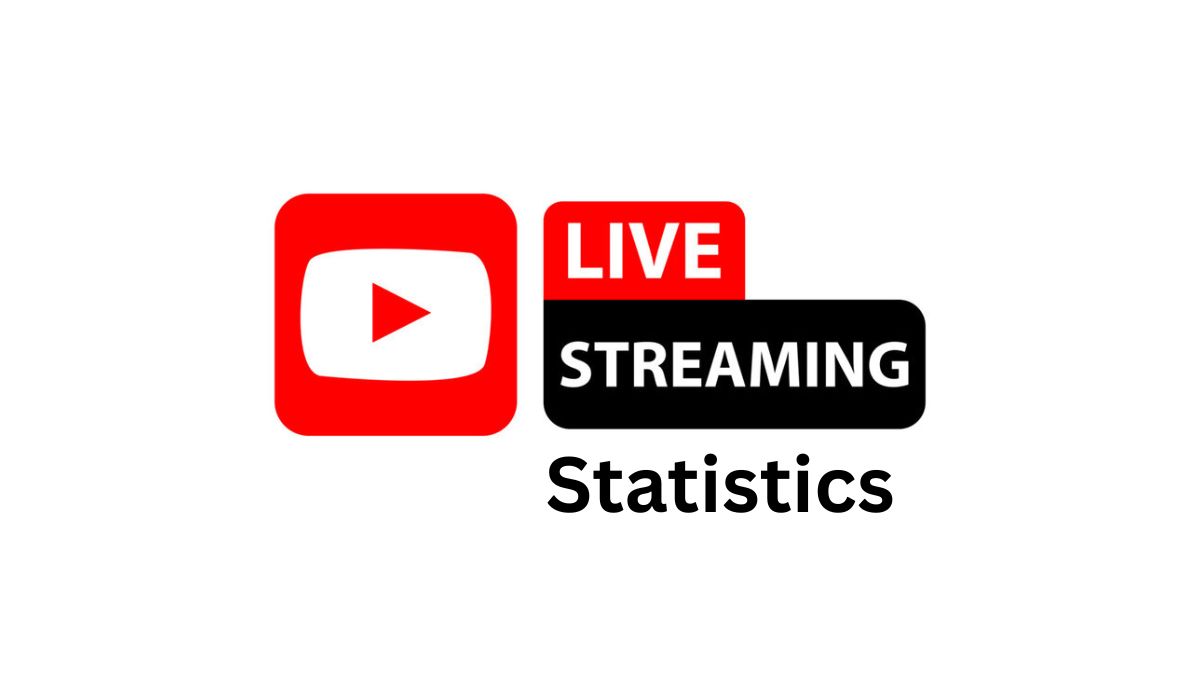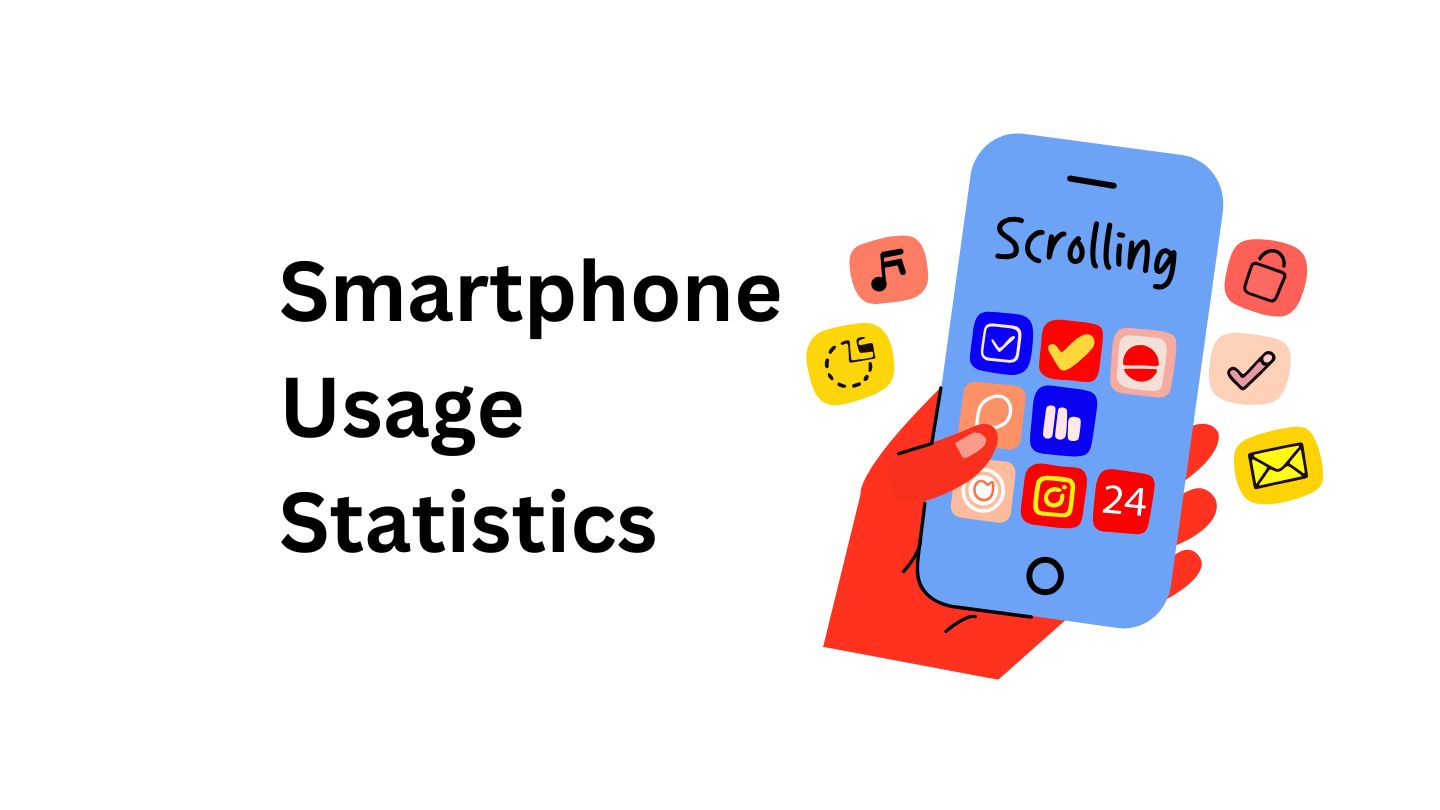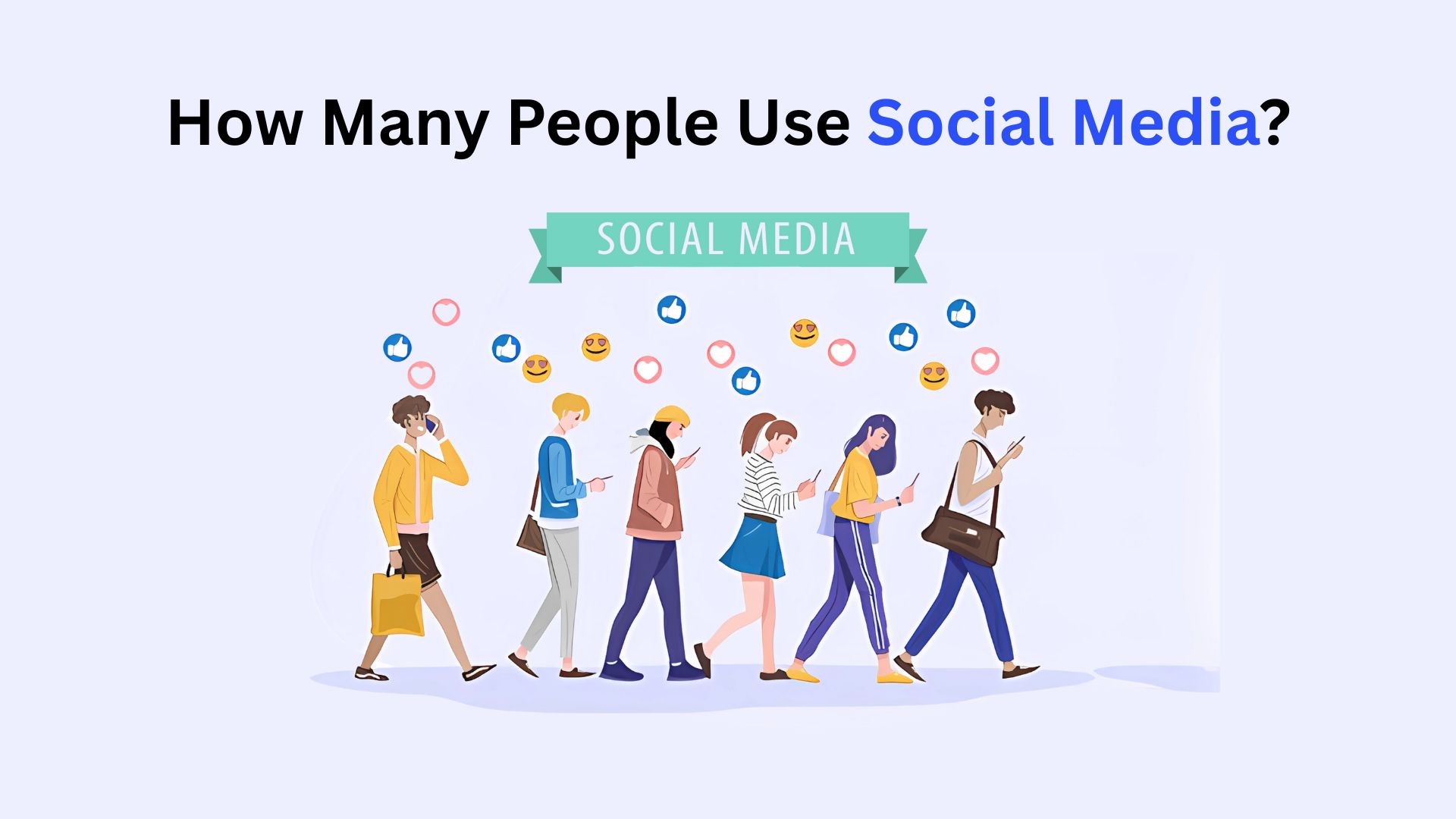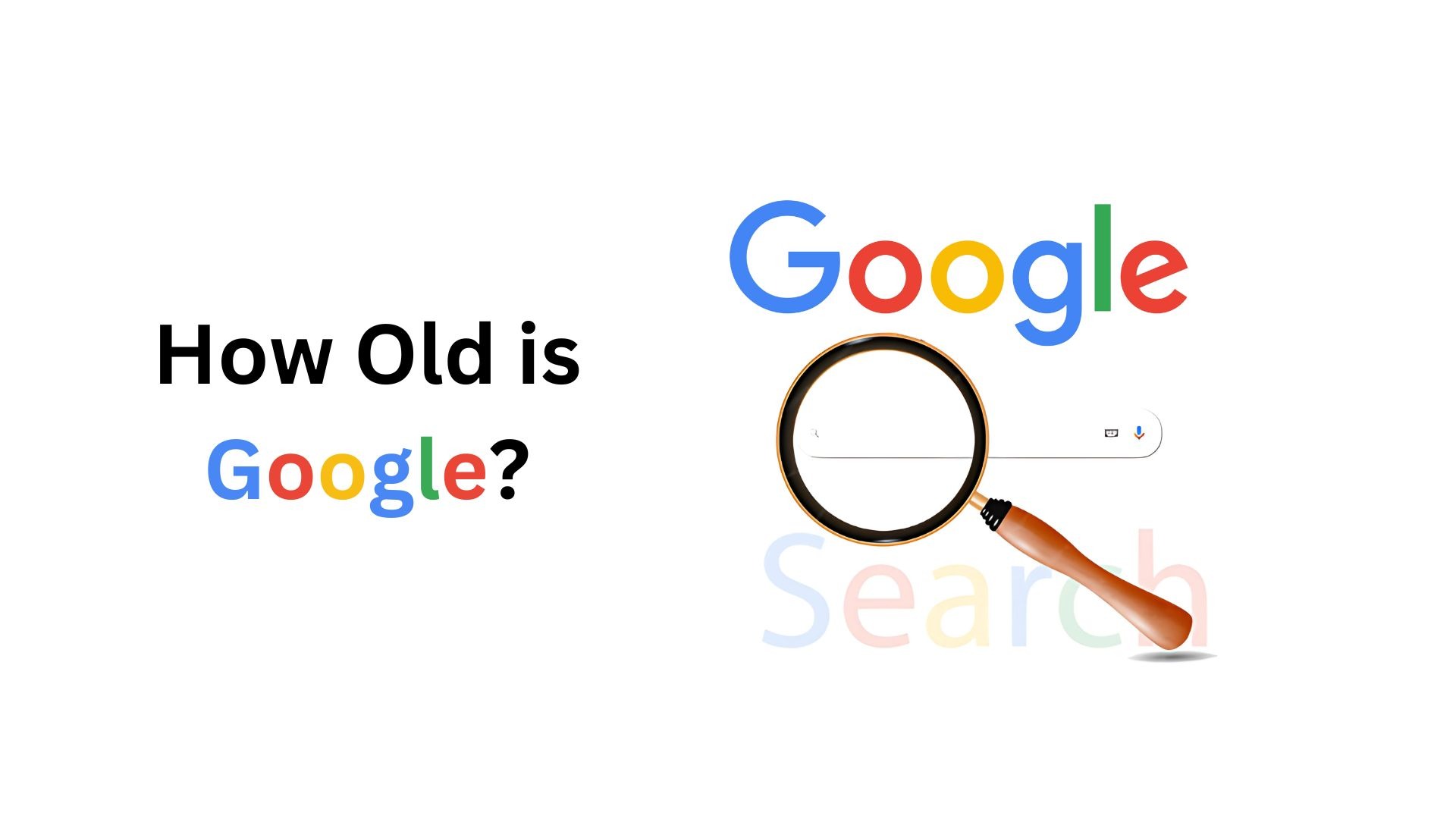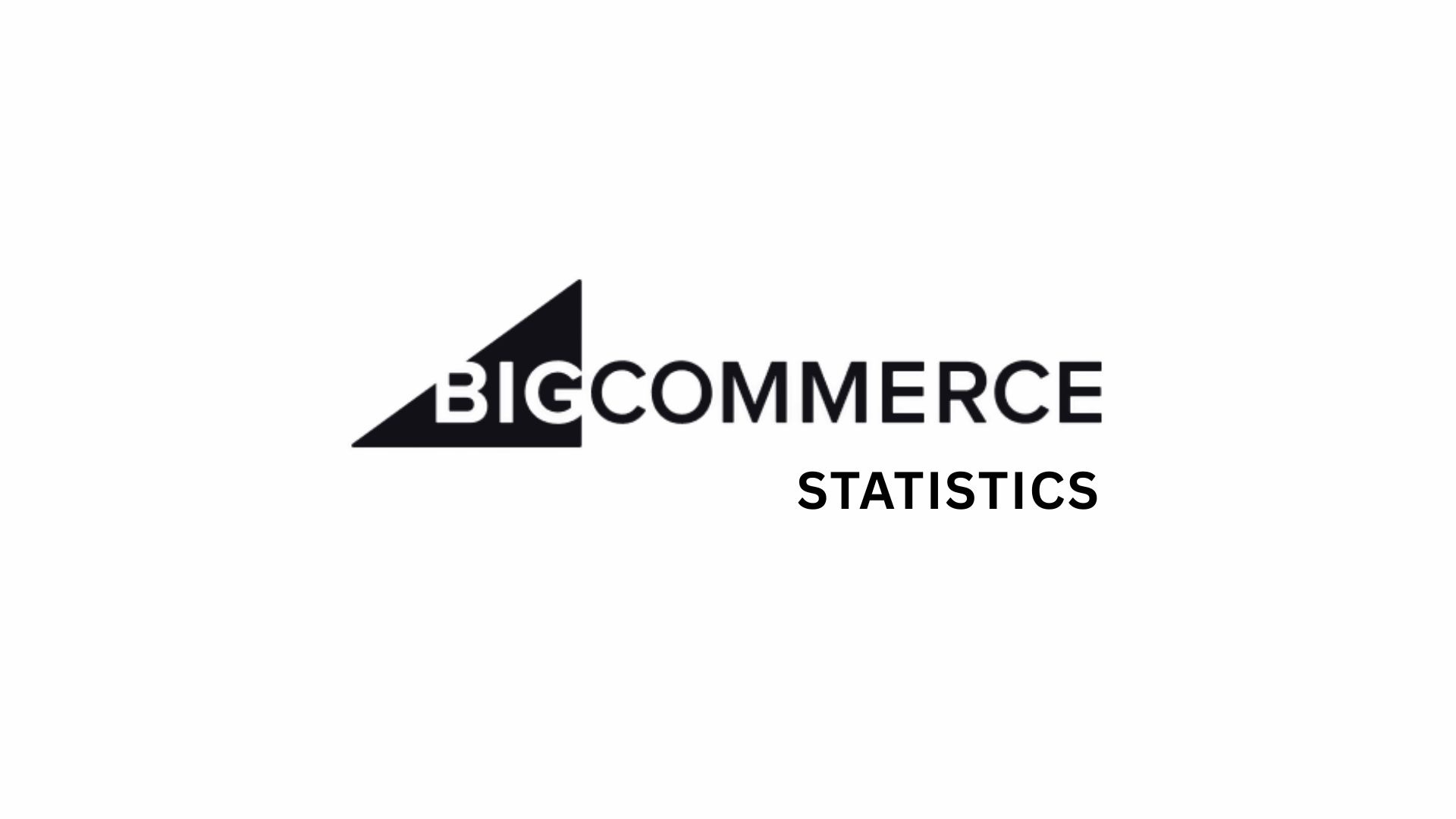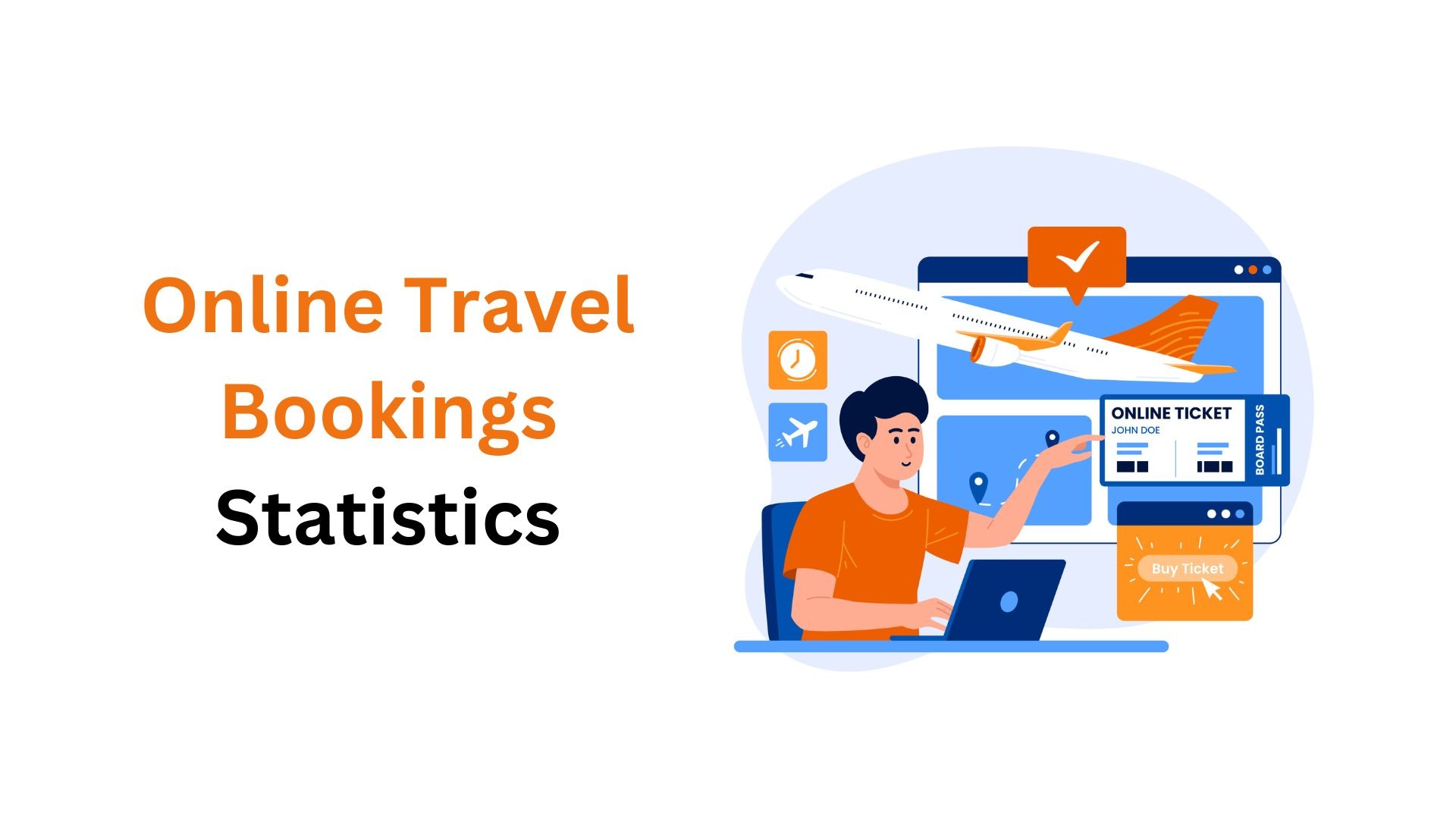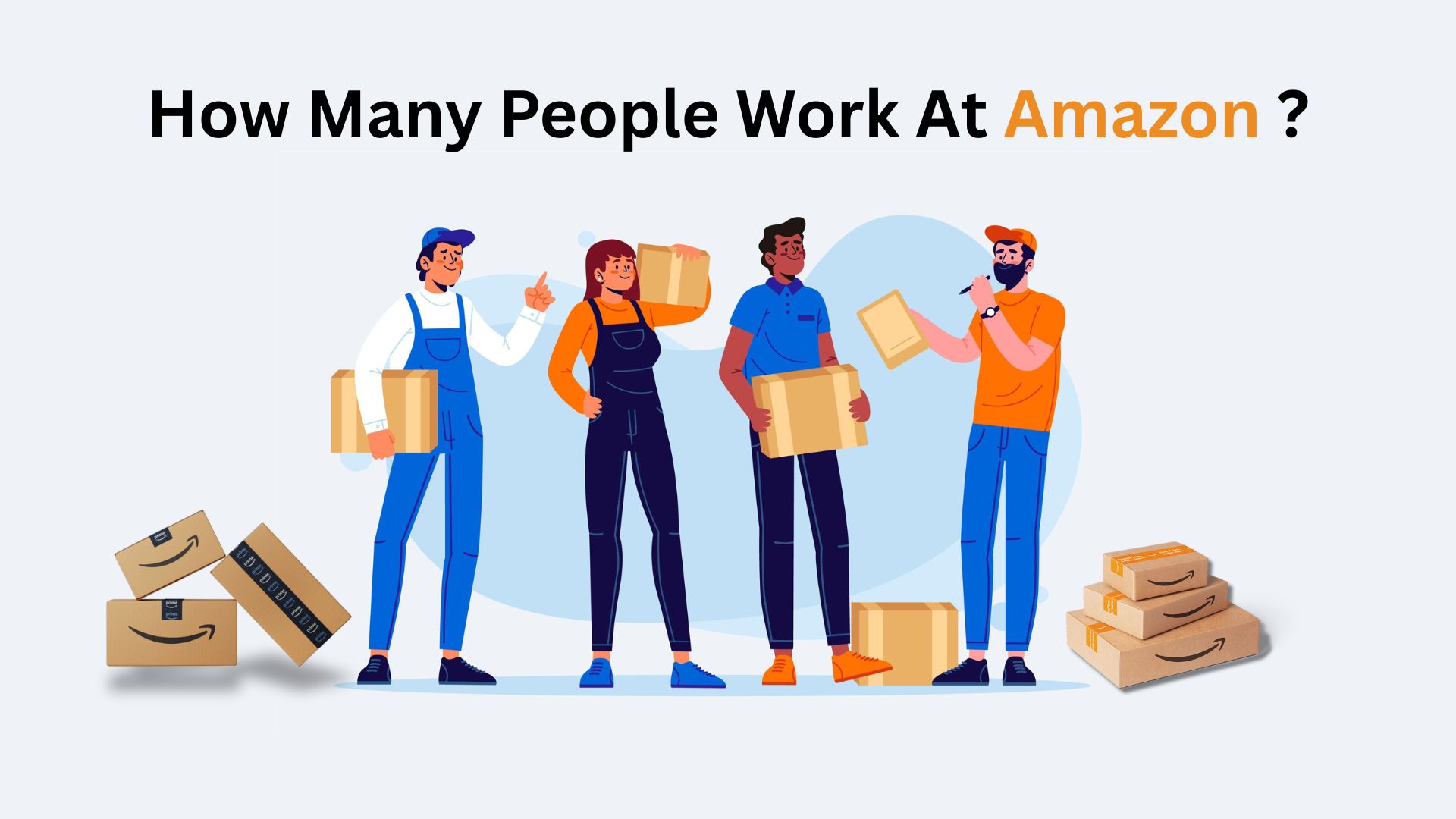Customer Loyalty Statistics By Market Size, Demographics And Facts (2025)
Updated · Jul 22, 2025
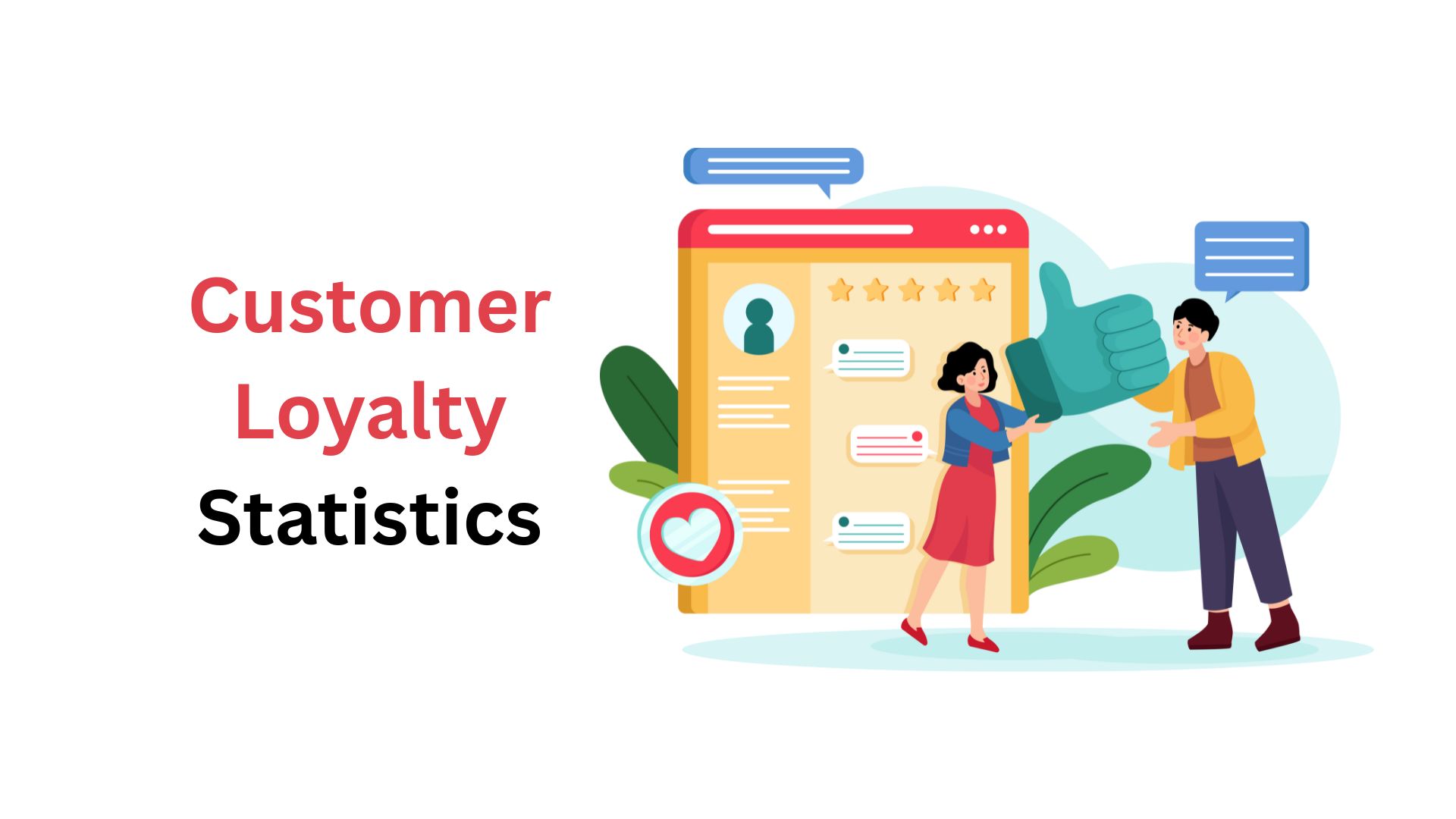
Table of Contents
Introduction
Customer Loyalty Statistics: After 2024, customer loyalty has taken an important role in determining the success of various businesses. While more money is thrown in by companies in the acquisition of new customers, less is spent on retention. Hence, customer loyalty is the highest-priced commodity in the investment portfolio of these businesses, from investment in loyalty programs to investment in an emotional link to the brand.
In this article, we review some of the newest customer loyalty statistics in 2025.
Editor’s Choice
- The global customer loyalty market went from US$11.71 billion in 2023 to US$13.31 billion in the year 2024 and is projected to grow to US$41.21 billion in 2032.
- Loyal customers pay 43% more than non-loyals.
- Those companies that perform well in loyalty programs grow revenue 2.5 times faster than their competition.
- Members of loyalty programs provide 12–18% higher annual revenue growth than non-members.
- 52% of customers will go out of their way for brands they are loyal to.
- Loyal customers are five times more likely to make repeat purchases, five times more likely to forgive mistakes, four times more likely to refer others, and seven times more likely to try new products.
- 65% of a company’s overall revenue comes from existing customers.
- 46% of loyal customers will remain loyal to a brand even after a bad experience.
- 75% of consumers will feel more attracted to a brand if it offers a loyalty program.
- 88% of consumers say it takes at least three purchases to commit to being loyal to a brand.
- 77% of customers said that they had been loyal to the same brand for 10 or more years.
Loyalty Market Size
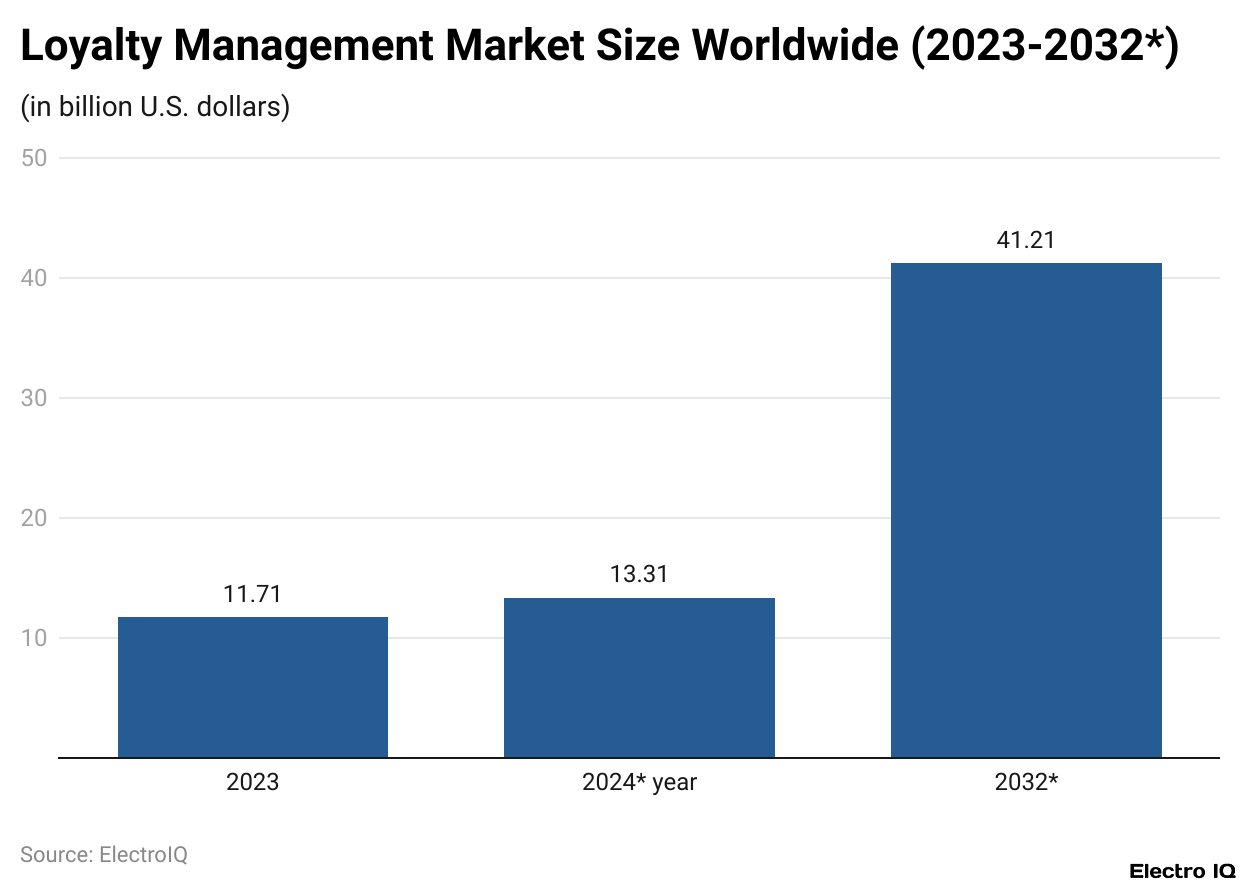
(Reference: businessdasher.com)
- As per Businessdasher, customer loyalty statistics show that the exponential growth of the loyalty market has been a projection of the growing importance of its application in business strategy.
- US$11.71 billion was the value of the market in 2023, and the figure went up to US$13.31 billion in 2024. This is expected to reach a monumental US$41.21 billion by 2032. Such growth can only be explained by the immense influence loyal customers exert on business performance.
- For instance, loyal customers spend 43% more than non-loyal ones, and companies with great loyalty programs have almost 2.5 times faster revenue growth than their peers.
- Loyalty program members also provide 12–18% higher annual revenue growth than nonmembers. Apart from another 48% of shoppers who say they would try and buy from brands with whom they have formed even the slightest bond, customer behavior does favour brand loyalty.
- Loyal customers really are a precious commodity: they buy five times as often, forgive an error five times over, refer the brand four times over, and try a newly launched product seven times over. Existing customers are now said to represent something of 65% of the revenues of a company, again, indicating the importance of undertaking loyalty.
- Even after a severely poor experience, 46% will proceed to continue purchasing from the same brand. Even with the presence of loyalty programs that instill a type of bonding, 75% of the consumers say they would have a better feeling about a brand if it gave them its loyalty program.
- Nevertheless, the very concept of loyalty does not immediately click. Almost 88% of customers say it takes at least three purchases to become loyal to a brand, and 77% of the shoppers say they have been loyal to the same brand for ten years or more.
- These facts indicate that loyalty is indeed a lot of long-term investment, yet the returns on these investments are equally worthwhile.
Customer Loyalty Program Statistics
- Going into 2025, we’re aware that loyalty programs will continue to remain an important tool for customer retention and increased revenue generation for the brands.
- A substantial 65.3% of consumers prefer to join a loyalty program to show their allegiance. Another 59% choose to wait until their favourite products are back in stock instead of shifting to any other brand.
- Other common alternatives for consumers to present their loyalty include subscribing to brand emails (58.5%), referring the brand (54.5%), and purposely paying extra for the products when cheaper options are present (39.2%).
- Purchasing text messages from any brand is another alternative, as 23.1% report preferring this (source: Yotpo).
- Of course, free loyalty programs win out, with a whopping 74% of participants opting in simply because there is no cost involved and it enables engagement without a risk.
- Other than for free, reasons for members to join include discounts on gas or fuel (56%), the opportunity to earn and redeem points (55%), cash rewards (39%), and personalised or exclusive offers (38%).
- About 38% of respondents said that the benefits of membership outweigh any annual fees, while 35% cited free food or drinks as an attraction.
- Other expectations are members-only events (25%), early access to new products (13%), and mobile checkout options (Statista).
- Membership in a loyalty program really influences purchase decisions, as 83% of consumers say that loyalty behaviour influences their choice to buy from a brand again. Furthermore, 84% of people say they are more loyal to brands that run these programs.
- High-performing loyalty programs may raise revenue by 15-25% per annum (Zinrelo). Despite their potential, most loyalty programs rarely see success after the initial phase.
- Some 77% of loyalty programs in the United States fail within the first two years, mostly because of a declining engagement from consumers after sign-up.
- Most programs focus on rewarding transactions and completely ignore the importance of building a deeper relationship with consumers, which is why one out of every three consumers eventually will cease association with these programs due to unmet expectations.
- Interestingly, in today’s landscape, 79% of consumers have some form of brand relationship, be it through retail subscriptions, memberships, or loyalty programs. Of these, 17% have all three types of brand relationships, signalling a growing demand for multi-dimensional engagement strategies.
Spending Behaviour And Customer Retention
- Customer spending and retention are interconnected factors, with loyalty playing a major role in it. About 28% of consumers said consistent branding was a key factor for them to stay loyal to a brand, according to SAP Emarsys.
- For businesses, this means that their message, tone, and visual identity need to be consistent across all touchpoints, including online and offline, to cement a relationship with customers. Existing customers tend to be more profitable than acquiring new ones.
- Business.com reports that long-term customers spend about 67% more than newer ones. Hence, retention and keeping the clients currently playing are of greater economic importance than securing new ones.
- Bain & Company says that an increase of only 5% in retention rates can result in 25-95% higher profits. This clearly shows how high returns can be achieved with very minor retention uplift schemes.
- Furthermore, McKinsey research has revealed that loyal customers are 64% more likely to purchase often and 31% more willing to pay premiums.
Customer Loyalty Demographics
| Age Group |
Percentage Of Consumers
|
| 18 to 24 years | 43% |
| 25 to 34 years | 57% |
| 35 to 44 years | 66% |
| 45 to 54 years | 69% |
| 55 to 64 years | 71% |
| Over 65 years | 65% |
(Source: demandsage.com)
- As per DemandSage, customer loyalty statistics state that different age groups exhibit different behaviours regarding brand loyalty.
- Gen Xers are said to remain loyal to a brand longer than Millennials and Gen Z. Gen Xers, unlike Gen Zers, tend to take more brand loyalty over time and are less likely to switch for petty inconveniences. Loyalty program participation is also very different depending on the age of consumers in the US.
- Consumers below 55 years are the least likely to participate in rewards programs. Participation is at its highest among 55- to 64-year-olds, with about 71% of all U.S. consumers participating in at least one rewards program.
- Conversely, only 43% of 18- to 24-year-olds signed up for a loyalty program, indicating that younger consumers are somewhat less engaged.
- Close to 57% of Gen Z Americans have reported that they feel less loyal towards brands since the pandemic.
- More than one-third of Gen Z will walk away from a purchase or leave a negative review if they have a bad online shopping experience-not-so-good, if you ask them.
- About 80% of Gen Z is currently amenable to trying out new brands online, signalling a preference for flexibility and innovation rather than long-term allegiance.
Factors That Break Brand Loyalty
- Brand loyalty can be fragile; in theory, even one poor experience can drive customers away. Roughly a third of customers stated they stopped buying from a brand they liked after one bad experience.
- The chance increases when bad experiences add up, with 59% of U.S. customers saying they would ditch a brand after many negative experiences. The user experience on mobile is an equally pressing concern.
- More than half of consumers—57%—say they might not recommend a business with a poorly designed mobile website, and 50% say they will stop visiting any site that isn’t mobile-friendly, irrespective of how much they like the business.
- Return and refund policies are also important. An improper returns experience would drive 84% of online shoppers away from a retailer, and 51% say the need to pay for returns would stop them from buying in the first place.
- 46% say they would stop supporting a brand after encountering employees who had no knowledge to help them properly. Subscription-based services and their problems.
- Providers failing to provide a good customer experience (such as easy refunds) might lose revenues up to US$2.2 billion a month.
- Loyalty is ultimately built by providing flexible services with utmost transparency.
- However, loyalty programs themselves generally fail to meet customers’ expectations of truly recognising their members.
- Only 21% of Americans “strongly agree” that representatives of loyalty programs actually make them feel recognised or special.
- Only 29% glad to receive relevant communication from the program that they are involved in. These gaps reveal a missed opportunity to create meaningful personal experiences that act as a glue of emotional bonding with long-term loyalty.
Customer Loyalty Impact Business
- Loyal customers affect business performance significantly. On average, customers spend 43% more with the brands to which they are loyal, making these customers much more valuable than casual or new customers.
- Considerably, companies that put their focus on loyalty usually grow with revenues at a rate that is 2.5 times faster compared to those in the same industry.
- These loyalists, in particular members of loyalty programs, can make a significant difference to business performance, driving a 12-18% revenue growth per year over non-members.
- An estimated 84% of ventures that embarked upon improving their customer experience started generating larger cash flows.
- Loyalty programs seem to keep customers coming back; 77.9% of American customers stated these programs influenced their choice to continue doing business with a company (Statista).
- An 86% majority of the consumers would shell out additional cash for a more satisfying customer experience, SurveySparrow cites.
- On the flip side, we also have 66% of consumers willing to switch brands when they feel unappreciated, denoting that emotional connection and acknowledgment are equally important, if not more, than the product/service itself.
- On a slightly larger scale, 72% of consumers globally say they feel attached and loyal to one or more brands (Stamp Me).
- Such an extensive degree of brand attachment testifies to the fact that loyalty is not only a buzzword within marketing but a let-down for continued business growth.
Conclusion
Customer loyalty statistics in 2024 are more than just points and perks; it is about value, personalised experiences, and emotional connection. Because retention basically costs a fraction of acquisition, businesses that have loyalty strategies in place witness better customer relationships and steadier revenue growth.
Brands that refuse to change, caught up with the waning phase of emotional engagement, personalised service, and mobile-first interactions, will lose market and customer trust. The data is unequivocal: developing customer loyalty is not just smart; it is a lifeline in long-term success.
Sources
FAQ.
Customer loyalty is important because it is cheaper to keep your customers than to look for new ones. Customers loyal to the brand spend 43% more, are 5 times more likely to repurchase, and contribute up to 65% of total revenues. Organisations with heavy-duty loyalty programs earn revenue 2.5 times faster than others.
To be successful, the program has to be an easy one to enter and present benefits to customers; for instance, fuel discounts, cash back and tailored offers. Conversely, programs that build social and emotional experiences might be more successful by feeling an emotional connection with members.
Generational differences manifest in customer loyalty. Generation X is brand loyal and would not switch off for trivial issues, while Generation Z is fluid and willing to jump brands-especially post-pandemic. Only 43% of the 18-24 demographic are signed up for loyalty programs, whereas more than 80% are willing to try out some brands online.
Poor experiences—such as unhelpful staff, bad mobile UX, or difficult return policies—can break loyalty. One in three customers will leave after a single bad interaction, and 84% of online shoppers won’t return after a poor returns experience. Additionally, feeling unappreciated or receiving irrelevant communications from loyalty programs can cause members to disengage.
Loyalty has a strong financial impact: loyalty program members generate 12–18% more annual revenue. A mere 5% boost in retention can increase profits by 25–95%. Also, 86% of consumers are willing to pay more for a better experience, emphasising how much customer experience and loyalty contribute to long-term profitability.

Barry Elad is a passionate technology and finance journalist who loves diving deep into various technology and finance topics. He gathers important statistics and facts to help others understand the tech and finance world better. With a keen interest in software, Barry writes about its benefits and how it can improve our daily lives. In his spare time, he enjoys experimenting with healthy recipes, practicing yoga, meditating, or taking nature walks with his child. Barry’s goal is to make complex tech and finance information easy and accessible for everyone.

